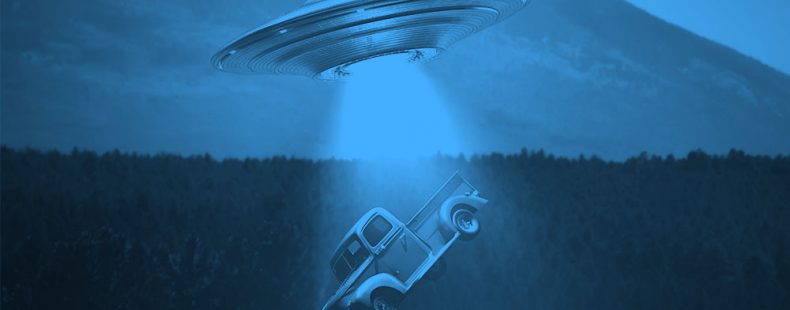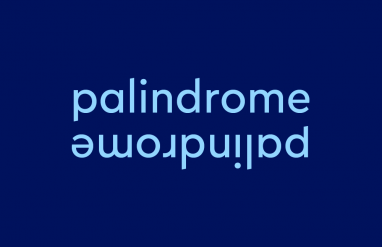From fire to the internet, science and technology have shaped and changed the world. But we can imagine so much more. Time travel! Teleportation! Interstellar spaceships! These (at least for the time being) are the realm of science fiction.
In this article, we’ll discuss what elements contribute to a story being categorized as sci-fi and provide examples on page and on screen, including “hard sci-fi” classics as well as some books and movies that you may not have realized fall into the genre.
What is science fiction?
Science fiction, popularly shortened as sci-fi, is a genre of fiction that creatively depicts real or imaginary science and technology as part of its plot, setting, or theme.
The fiction part of science fiction means, of course, that it’s a fictional story—not a real-life account.
The word science refers to the fact that the story in some way involves science or technology that—no matter how advanced—is depicted as being based on real scientific principles, as opposed to involving magic or the supernatural. (More on this distinction in the next section: Sci-Fi vs. Fantasy.)
Science fiction isn’t always ultrafuturistic. Sometimes, it depicts technology just beyond or slightly different than our own.
The genre encompasses a huge range of stories with many different themes and topics. Regardless of the specific technologies or scientific advances being depicted, sci-fi often speculates about their effects on or consequences for the reality of the world being described. In other words, sci-fi stories often ponder how science and technology can go wrong for individual people or society (often as a metaphor for how they can go or have gone wrong in our own reality).
These high stakes mean that science fiction stories are often thrilling or even horrifying—sci-fi horror is a genre unto itself. Still, science fiction is not always scary, and most sci-fi stories also include elements from other genres, such as mystery, romance, comedy, and fantasy.
Learn about the similarities and differences between horror and terror.
Science Fiction vs. Fantasy
The genres of science fiction and fantasy are often considered to be part of an even larger genre known as speculative fiction, defined as “a broad literary genre encompassing any fiction with supernatural, fantastical, or futuristic elements.” Speculative fiction speculates about fictional worlds and characters completely different from our own or with elements outside of our reality. In other words, it’s fiction based on asking “What if…?”: What if we developed a technology that could allow us to travel to other galaxies? What if mythological figures were real?
The first example about intergalactic travel is an example of a sci-fi premise. The second example about mythological figures is an example of a fantasy premise.
The fantasy genre encompasses stories dealing with supernatural or unnatural events or characters, those that exist outside the realm of science and instead in the realm of magic and mythology.
Science fiction and fantasy are usually differentiated from each other based on plausibility and how they explain the workings of the universe they depict. In general, the wonders (or horrors) of a science fiction story are depicted as the result of plausible scientific advances. In contrast, the elements of fantasy often rely on supernatural or mystical explanations (if they are explained at all).
For example, both a science fiction and a fantasy story may have a character who is able to shoot lighting from their hands. If a character is able to do this because they have a genetic mutation or machinery in their hand, this would be classified as science fiction. If, on the other hand, the character is able to do this because of magic or because they are a god (which are outside the realm of science), this would be classified as a work of fantasy.
But stories aren’t always so easily distinguished. Remember, these genres are artificial ways of classifying stories. Many stories blur the lines between the two genres, or have elements of both, or transcend the idea of genre altogether.
As sci-fi writer Arthur C. Clarke said: “Any sufficiently advanced technology is indistinguishable from magic.”
Examples of Science Fiction
Science fiction began as a literary genre. It has spawned written works in many forms, including countless novels, short stories, and works of flash fiction. But the genre is also extremely popular in other forms of media, including comic books, graphic novels, movies, shows, and video games.
In general, there are certain topics, themes, and plots that frequently appear in many science fiction stories. These include but are not limited to:
- space travel
- time travel
- robots
- artificial intelligence
- advanced computing
- virtual reality
- extraterrestrial life
- genetic experimentation
- cloning
- transhumanism
However, not every sci-fi story is set in the far future or includes super-advanced technology. Some sci-fi works include more subtle elements, including in worlds that look much like our own.
While it is a comparatively modern genre, science fiction still has a rich history that includes works by many popular authors. Here is an abbreviated timeline of just a few notable examples in the history of science fiction:
- 1817: Frankenstein by Mary Shelley. A cautionary tale about an attempt to create life, Frankenstein is a classic of the Gothic horror genre and is often argued to be one of the first science fiction novels.
- 1870: Twenty Thousand Leagues Under the Sea by Jules Verne. Verne imagined a story about the potential that new technology had for exploring the largest unexplored part of the world—the ocean.
- 1890s: The Time Machine (1895), War of the Worlds (1897), and other classic fiction stories by H.G. Wells.
- 1926: Amazing Stories. The first magazine dedicated to science fiction stories was founded by editor Hugo Gernsback, who is often credited with coining the term science fiction. The Hugo Awards, annual awards given to the best works of science fiction, are named for him.
- 1949: 1984 by George Orwell. Orwell’s dystopian novel explores how technology could be used nefariously to control society.
- 1950: I, Robot by Isaac Asimov. Asimov wrote a huge number of science fiction stories and other works, including those discussing his influential “Three Laws of Robotics.”
- 1965: Dune by Frank Herbert. One of the best-selling science fiction novels of all time, Dune was highly influential in the genre and inspired many other popular works, including the Star Wars and Star Trek franchises.
- 1968: Do Androids Dream of Electric Sheep by Philip K. Dick. The basis for the film Blade Runner, Dick’s story questions what really separates humans from machines.
- 1969: The Left Hand of Darkness by Ursula K. Le Guin. Le Guin’s novel not only cemented her as a legendary science fiction writer, but helped to pave the way for other women authors in science fiction.
- 1979: Kindred by Octavia Butler. Butler’s many novels cross genre lines and are among the works that pioneered what came to be known as Afrofuturism.
- 1984: Neuromancer by William Gibson. Gibson’s novel was highly influential to the beginnings of the cyberpunk genre. Gibson coined the term cyberspace and explored the potential of the internet before most people were even aware of its existence.
- 1985: The Handmaid’s Tale by Margaret Atwood. Atwood’s influential novel (the basis of multiple adaptations) is among the many sci-fi stories based on a future dystopia.
- 2008: The Hunger Games by Suzanne Collins. Collins’s Hunger Games series of books is just one modern example of the continuing popularity of the genre.
- 2020: This Is How You Lose The Time War by Amal El-Mohtar and Max Gladstone. This critically-acclaimed and award-winning novella co-authored by El-Mohtar and Gladstone is an example of how sci-fi continues to tell human stories in fresh ways.
Science fiction is also a very popular film genre. Many science fiction films have been adapted from stories and books, including 2001: A Space Odyssey, Jurassic Park, Blade Runner, Dune, Starship Troopers, The Hitchhiker’s Guide to the Galaxy, and The Hunger Games. Many other popular science fiction films and franchises began as their own original stories, including Alien, Back to the Future, The Matrix, and the Terminator series.
The science fiction and fantasy genres often overlap and many popular science fiction stories also include fantasy elements. The Marvel Cinematic Universe is a prominent example, with its popular movies, shows, and comics featuring scientifically plausible superheroes like Iron Man and Black Panther alongside fantastical ones like Thor and Scarlet Witch.
Subgenres that sometimes combine sci-fi and fantasy include steampunk and sci-fi horror.
As sci-fi continues to increase in popularity, innovative works are likely to continue to appear and take us—and the genre itself—to new places.














